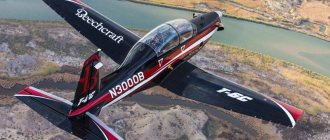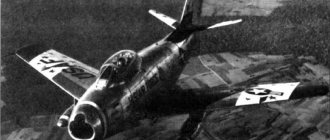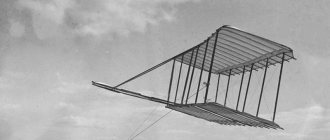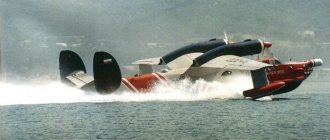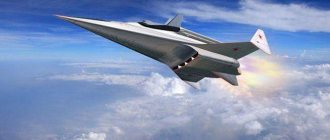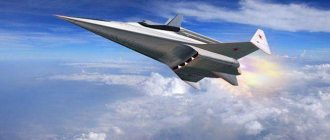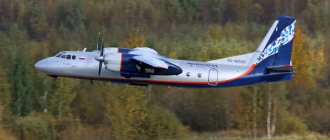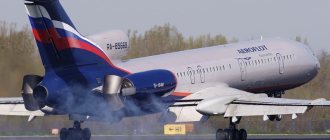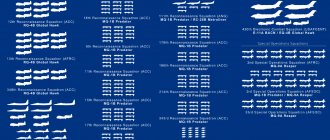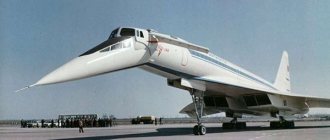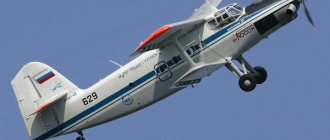Dragon Lady. U-2 soars in the skies
It looks like the U-2 spy plane is set to continue its nearly 60-year service as the US Air Force plans to keep the platform in active service for years to come.
Having served behind the front lines for more than six decades, the venerable U-2 Dragon Lady spy plane is still It is now one of the most popular systems of the US Air Force. Let's see what's planned to keep this Cold War warrior in service for a little while longer.
If the language contained in the 2022 defense budget and then-Treasury Deputy Secretary Jim Martin's May 2022 statement that "the U-2's retirement date has not been determined" are correct, then the fate of America's high-altitude surveillance aircraft The U-2S has finally become much more defined after a wave of rumors about its possible removal from service in favor of unmanned systems.
The reconnaissance aircraft in U-2S configuration, whose famous ancestor was the U-2R, nicknamed "Big Wing" (a term used to distinguish between first and second generation aircraft), entered service with the US Air Force back in 1994, and until very recently There were plans to replace it around 2022 with the RQ-4 Global Hawk unmanned aerial vehicle (UAV) developed by Northrop Grumman. These plans have always been somewhat controversial, because, according to many experts, although the Global Hawk's merits are undoubted (the maximum flight endurance of more than 32 hours remains one of the most indisputable), its payload cannot compare with the sensor suite of the manned platform that it was supposed to come from. for changing. It should be noted that, despite the vigorous efforts of the manufacturer of the RQ-4 drone - Northrop Grumman, such an achievement of the U-2 would probably be almost impossible without the introduction of at least a new engine that could increase payload capacity, provide more on-board power and increase the platform's flight altitude.
The single-seat high-altitude reconnaissance aircraft U-2S developed by Lockheed Martin is structurally a cantilever mid-wing with lowered wingtips. It is powered by a 75.7 kN turboprop engine (take-off thrust at sea level) from General Electric Fl 18-GE-101; the wingspan is 31.39 meters (the newest version of the RQ-4 Block 30/40 UAV has a wingspan of 39.9 meters); flight range 11,265 km (ferry range of RQ-4 is 22,780 km); service ceiling is more than 21,300 meters (compared to 18,300 meters for the RQ-4); and target load 2268 kg (1360 kg for RQ-4).
It is stated that the RQ-4 drone is capable of remaining in a patrol area for 24 hours at a range of 2222 km, while NASA claims that its ER-2 aircraft (the U-2S platform modified for scientific research) can remain in the air for more than 10 hours. Although this may be a rough comparison, these figures suggest that the RQ-4 UAV can remain in a given area at least twice as long as the U-2 aircraft, but the latter can take 40% more than the target altitude load, at least three thousand meters more. Again, when compared to the amount of effort expended on launch/return, maintenance and mission control of the respective platforms, additional resources are required for flight preparation and pilot support, since the U-2 is a manned platform.
The U-2S has undergone at least two major upgrades since entering service. It is worth noting several changes that have been made: integration of fiber optic data transmission channels (in order to increase resistance to electromagnetic interference); installation of a one-piece cockpit windshield; integrated GPS/INS navigation system; electronic jamming station AN/ALQ-221 from BAE Systems (there is no information on installing any electronic defense system on the RQ-4 UAV); installation of the ASARS-2 (Advanced Synthetic Aperture Radar System-2) radar system from Raytheon in the “2A” version; and a new RAMP (Reconnaissance Avionics Maintainability Program) cabin configuration.
The AN/ALQ-221 is an integrated radar warning and jamming system compatible with the RAMP computer and cockpit displays. It consists of various subsystems, including fuselage-mounted transmitters and receivers, as well as forward and backward direction-finding antennas located in wingtip housings.
Raytheon describes its ASARS-2 side-scanning system (a Hughes original) as an X-band (8-12.5 GHz) synthetic aperture radar that generates real-time, high-resolution imagery “in all weather, day and night.” at night, at ranges significantly exceeding the ranges of optical-electronic systems.” The station detects and determines the exact location of stationary and moving ground objects (in strip and individual area survey modes) and, after collecting detailed data, formats it and transmits it via a data link in the form of a high-resolution image. The range of data transmission to a ground station within line of sight is about 354 km. Over-the-horizon operations are simplified by the Senior Spur satellite communications system.
The ASARS-2 base station consists of an onboard data acquisition subsystem and a ground data processing subsystem. The first subsystem includes an antenna array, a liquid cooling system, a heat exchanger, a system control/status unit located in the cabin, a transmitter, a receiver/feeder, a power management unit, and a low-voltage power supply. The radar operates in several operating modes: search for moving targets, selection of moving targets, search for stationary targets and selection of stationary targets.
U-2S plane on the runway.
The wingspan, “super nacelles”/suspended containers, dorsal radome of the satellite communications antenna, antenna radomes of the electronic radar system on the wingtips are clearly visible (photo below) Currently, all ASARS-2 side-looking radars are configured to the ASARS-2A standard, which is compared to its predecessor includes hardware improvements (including a commercial off-the-shelf receiver/feeder/controller and a powerful onboard PC-based processor), updated ground station software, and new analysis tools. According to the manufacturer, the ASARS-2A standard station increases the system’s viewing area (the function is called “improved large-area surveillance coverage”), and this is four times the coverage area of the basic ASARS-2 version; provides resolution from 30 cm to 3 meters (depending on the mode) and selection of moving ground targets GMTI (ground-moving target indication) with the possible addition of selection of moving targets to the radar point scan mode; uses all the data processing capabilities of the platform (generating complex video reports). The system is also capable of transmitting data from sensors to a ground station using the on-board DDL-2 system (Dual Datalink 2 - dual data link) at speeds of up to 274 Mbit/s.
For comparison, the AN/ZPY-2 X-band radar system with AFAR technology (active phased array antenna) and synthetic aperture mode is prohibited from being installed on the RGM Global Hawk drone in the Block 40 configuration (as one sensor; the U-2S can carry ASARS-2 along with with at least one more piece of equipment). The operating modes of the AN/ZPY-2 multifunctional radar developed by Northrop Grumman/Raytheon include independent air search, parallel selection of moving targets, search by control signal, high range resolution, selection of ground moving targets.
In addition, under the RAMP program, the original analog cockpit of the U-2 “Big Wing” aircraft has been upgraded to the “glass” standard. In accordance with it, a new main processor, three 15x20 cm color multifunction displays with an active matrix from L-3 Technologies were installed; integrated control panel from Honeywell; and an independent secondary flight display from Meggitt Avionics. In the cabin upgraded to the RAMP standard, CARE (Cabin Altitude Reduction Effort) measures were also carried out, within the framework of which the living conditions of the aircraft pilot were improved (by reducing the physiological stress from a long flight at altitudes of more than 21,000 meters) and the likelihood of decompression (caisson) occurrence was reduced. diseases. An aircraft modified in this way has a cabin pressure of 0.54 kg/cm2 (compared to 0.27 kg/cm2 in an unmodified platform), and when flying at operating altitudes, the equivalent cabin altitude is 4500 meters.
In addition to the ASARS-2A radar, U-2S payload options include/recently included Raytheon's Remote Avionic System TR (RAS-1R) and Northrop Grumman's AN/ASQ-230 Airborne Signals Intelligence Payload (ASIP); optical camera OVS (optical bar camera) weighing 229 kg and with a focal length of 762 mm from ITEK (original developer); hyperspectral sensor SPIRITT (Spectral Infrared Imaging Technology Testbed) (no confirmed installation information) from BAE Systems; and two electro-optical/infrared reconnaissance stations SYERS (“Senior Year” Electro-Optical Reconnaissance System) from UTC Aerospace Systems. Of all this equipment, Northrop Grumman demonstrated the ability of the Global Hawk drone to carry the OBC camera, the SYERS-2 reconnaissance system and the UTC MS-177 multispectral camera (via a universal payload adapter); At the same time, at the moment, the ASIP complex is the only one of the listed systems that is standardly installed on the U-2S and RQ-4. The AN/ASQ-230 station, with its modular and open architecture, detects, identifies and locates radar sources and other types of “modern” electronic communications signals.
The pilot's helmet and altitude-compensating suit also contribute to increasing the capabilities of the U-2 aircraft.
In the version for the U-2S aircraft, the ASIP electronic intelligence (RTR) kit includes a two-unit high-frequency element, a three-unit low-frequency element, an interface unit, and several antennas that also work on the RTR system RAS-1.
For its part, the ASIP kit for the RQ-4B Block 30 drone can operate in several modes, including radio reconnaissance and electronic reconnaissance, radio direction finding, obtaining emitter coordinates, and intercepting special signals. In this package, the High Band System Production Configuration Unit (HBS PCU) is capable of detecting, locating, identifying and analyzing radar and other special signals from altitudes up to 18,000 meters.
The HBS PCU is described by the manufacturer as a modular, scalable system and includes RACE++(R) Series Versa Module Eurocard (VME) multicomputers from Mercury Computer Systems. The Global Hawk ASIP kit is housed in so-called multiplatform enclosures (MPE) with direct spray cooling, which simplifies the use of off-the-shelf components in harsh environments. In our case, a solution using MPE simplifies the use of finished equipment under conditions of high acceleration and vibration; in addition, for example, a system with 20 board slots (energy density per board from 30 to 60 W) can operate at 30-50 ° C at a temperature environment from -65°С to 71°С. Using this approach simplifies the installation of MPE electronics in unpressurized compartments of the Global Hawk drone body.
According to unconfirmed sources, the US Air Force has acquired at least three AN/ASQ-230 systems that will complement the standard RAS-1R RTR equipment of the U-2S aircraft. According to the developer, RAS-1R is based on digital technologies and includes various radio frequency converters, microprocessors, digital signal processors and a direction-finding subsystem. As well as other U-2 aircraft equipment, ASARS, ASIP and SYERS [see. further], RAS-IR is controlled remotely from a ground station.
The target load of the U-2S aircraft is located in the following places: interchangeable nose sections (ASARS radar) or (optical equipment (SYERS), two compartments in the fuselage (340-500 kg compartment "Q-bay" and ) and two underwing removable "super nacelles" load capacity 290 kg.
Together, these different payload volumes allow the U-2 to carry a mixed mission load that can be optimized to meet the requirements of a specific mission and replaced by a different configuration if necessary. Regarding the fact that such equipment can “see” from an operating altitude, it is assumed, but not confirmed, that the SYERS system can image objects at a distance of more than 185 km, the ASARS radar has a range of at least 370 km, and the ASIP system can determine radiation sources at ranges of 185 km and detect signals at ranges up to 483 km.
The U-2S's capabilities are further enhanced by its ability to carry an advanced communications suite in addition to its sensor payload. It may include line-of-sight data transmission equipment DDL-2 in different versions: the Extended Tether Program (ETP) satellite communication system with virtually global coverage; a voice communications kit consisting of high frequency, very high and ultra high frequency radios (HF, 3-30 MHz; VHF, 30-300 MHz; and UHF, 300 MHz-3 GHz); a system with an open architecture “Einstein Box”, which, among other functions, is capable of establishing communications between fifth-generation fighters and existing platforms. In addition, the U-2 “Big Wing” aircraft are equipped with a voice communications kit, which at various times included Rockwell Collins 718U and AN/ARC-217(V) transceivers at 3-30 MHz, an AN/ARC-109 transceiver at 225 -400 MHz and Raytheon AN/ARC-164(V) transceiver at 225-339.975 MHz.
The nose cone of the U-2S aircraft with the ASARS-2 radar is 76 cm longer than the standard installation.
The protrusion on top covers the radar heat exchanger . Perhaps all of the above may seem like some kind of idealization to someone, but this is far from the case. The purpose is simply to point out some of the reasons why the US military wants to keep this aircraft, which in 2022 flew 3,500 missions with a mission efficiency of 95%, as part of its global surveillance, reconnaissance and information collection system, along with the RQ-4 drone. .
Regarding what it will take to keep the U-2S in demand going forward, the Air Force included a provision in its 2022 budget request (issued in May 2022) to maintain the aircraft and its payload in its current condition, as well as work to improvements, including work on ASARS, modernization of the “multispectral sensor” and aircraft electronic electronic signals, data transmission channels and electronic reconnaissance systems, along with increasing the level of flight safety.
The ASARS radar proposals aim to enhance its data collection capabilities along with increased performance to meet today's intelligence and surveillance needs, while the multispectral sensor focuses on optics and focal planes. Work on platform security systems is aimed at their ability to combat existing and emerging threats.
As for improving communication channels, the emphasis here is on the ability to establish communication beyond the line of sight, while flight safety issues include improvements to the aircraft escape system and technical upgrades to the pilot’s helmet and altitude-compensating suit. Other areas of interest include maintaining the technical condition of the aircraft body and improving the navigation system/astro orientator. finalization of the RTR ASIP complex and updating of sensor and other ground equipment.
In the American media, touching on the topic of a possible extension of the life of the U-2S aircraft, the possibility that the ASARS radar would be upgraded to the 2B standard (has a greater detection range compared to the 2A model) was often discussed. Also mentioned was the integration of the astro-orientator and new data transmission systems with higher throughput into the target load, the modernization of the electronic radar system and (which is probably most important) the implementation of the concept of “triple information collection”, when one U-2S aircraft has an ASARS side-looking radar The -2B is installed in the nose cone, the SYERS optical-electronic system in one of its “super nacelles”, and the RTR equipment in the other.
The same media outlets claim that the 2022 budget includes $248 million in procurement costs specifically for the U-2 aircraft and approximately $156 million in U-2-related research and development.
If funding is available, the service life of the U-2 aircraft is fully guaranteed to be extended in the short to medium term. Less clear is how the Air Force's U-2 fleet will be operated for the foreseeable future. These aircraft are currently assigned to the 9th Reconnaissance Wing, Air Combat Command, based at Beale Air Force Base in California. In this Wing, operational U-2S aircraft (including the two-seat TU-2S trainer) are assigned to the 5th and 99th Reconnaissance Squadrons of this Wing. Of these, the 5th Squadron is deployed at Osan Air Base in South Korea. The Wing's U-2s operate/have operated in other areas, including Al Dhafra AFB in the United Arab Emirates (99th Expeditionary Squadron/380th Expeditionary Airlift Wing), Andersen AFB in Guam, UK Akrotiri AFB in Cyprus, and Furford AFB. In Great Britain.
The illustration shows the payload components that the U-2 Big Wing can carry.
The signatures “Senior Spear” and “Senior Ruby” refer to the RAS-1R RTR system More about the U-2S payload
Since entering service, the U-2 reconnaissance aircraft has performed many strategic and tactical reconnaissance missions; The platform and sensor hardware have been refined to maintain efficiency and operational advantage. The U-2S/TR-1 variant can carry a variety of equipment in its nose compartment and the Q-bay and E-Bay compartments located in the lower part of the fuselage. The modular design principle makes it possible to change the sensors and platform configuration for specific tasks, and available technologies, including optical-electronic systems and radar stations, allow reconnaissance in any weather and obtain high-quality images. For example, one of the standard optical-electronic systems, the HR-329 gyro-stabilized frame camera (H-cam) with a broken optical axis and a focal length of 1676 mm, allows you to obtain images with very high resolution.
Reconnaissance optical equipment also includes the IRIS (Intelligence Reconnaissance Imagery System) III panoramic camera. The IRIS III optical system has a focal length of 610 mm and uses a curved optical axis; the system rotates 140° along the flight path, allowing scanning of wide side stripes.
The OBC panoramic optical camera from ITEK Corporation (now UTC Aerospace Systems) was installed on the U-2, SR-71 and Apollo 17 spacecraft that flew to the Moon. It is designed specifically for high-altitude reconnaissance and has a focal length of 762 mm. The OBC produces very high resolution panoramic images and has a rotating lens that uses a slit to expose a strip of wet film. The camera reels contain 10,000 feet of color or black and white film. Kodak, then a supplier of unexposed film, chemicals and technical solutions used for the US military's reconnaissance missions, developed the first digital camera back in 1975. Rapid advances in digital technology have led to the emergence of digital solutions for species intelligence tasks. Digital systems make it possible to transmit data from an aircraft to a network in almost real time, and this makes it possible to quickly process, analyze and communicate information along the sensor-commander chain, which is very important in modern warfare.
The nose section of the U-2 aircraft houses the SYERS digital imaging station, also developed by UTC Aerospace Systems, which is considered the main optical sensor of the U-2. This system includes the actual sensor kit, electronic interface, fan assembly, electronic servo assembly and a rotating front optical input channel that allows you to point the lenses left, right and down. The SYERS system has a focal length of 3658 mm.
The original SYERS system provided imaging in two bands: visible and mid-infrared (MWIR). The latest version of the system can shoot in more than six spectral ranges. The SYERS system captures images of large rectangular areas along an aircraft's flight path and simultaneously transmits a continuous sequence of still images of each rectangular area to a ground control station for processing and analysis. The SYERS optical-electronic surveillance station consists of a control handle in the cockpit, a data recording device in the Q-bay compartment, a mobile ground station “Senior Blade” and a ground-based data collection, analysis and distribution system DCGS (Distributed Common Ground System). The system architecture includes a "Senior Blade" ground station with a communications link used to control camera operation and distribute data.
From an altitude of more than 21 kilometers, SYERS's downward-rotating camera has a horizon-to-horizon field of view, providing the key ability to see across borders and capture images of restricted areas without having to fly over them. There have been several upgrades to the SYERS system; Compared to its predecessor, the characteristics of each subsequent version were improved, providing higher resolution, better sensitivity, a larger spectral range and an increase in distance from the objects being studied.
In 2001, a new camera with multispectral characteristics, SYERS-2, came into operation. SYERS-2 enables near-simultaneous imaging in more spectral bands than before, including visible, far-IR and mid-IR. Compared to the previous dual-band version, the SYERS-2 camera's far- and mid-infrared imaging has improved performance in adverse conditions, including fog, smoke and low light. Other SYERS variants include SYERS-2A, deployed in 2007, and SYERS-2B, deployed in 2012. In March 2014, the SYERS-2C version appeared, optimized for maritime missions and featuring a large spectral coverage.
Optical systems provide excellent imaging capabilities, but their performance is degraded in the presence of clouds and precipitation. To be able to conduct reconnaissance in bad weather, the U-2 can also be equipped with a high-resolution side-view radar, which allows imaging in any weather. The ASARS-2 radar developed by Raytheon can be installed in the U-2 nose cone. The ASARS-2 multi-mode real-time reconnaissance system consists of two AFARs. The system provides imaging at any time of the day and in any weather; it is effective in smoke, fog and other atmospheric phenomena that degrade the performance of optical systems. Side-facing radar antennas capture high-resolution images, providing a radar survey of the earth's surface to port and starboard. AFAR operates in several modes, including a synthetic aperture radar function that allows you to capture images of objects in near photographic quality, and a wide area surveillance mode that provides selection of ground moving targets.
The U-2S version of the aircraft can accept sensors in the nose cone and Q-bay compartment. that is, it is possible to install a SYERS camera and a panoramic camera simultaneously. The dual-sensor configuration allows for horizon-to-horizon and sub-flight image capture, with SYERS also adding multispectral capabilities.
In accordance with another placement scheme, the SYERS camera is installed in the nose cone, and the ASARS-2 radar is installed in the modified Q-bay compartment. This configuration allows for image capture via electro-optical/infrared and radar systems in a single aircraft, thereby freeing up one platform for alternative missions.
General view of the RAMP aircraft cabin in the U-2S Block 20 variant
Prospects
The US Air Force has a total of 25 U-2S aircraft in service, while, according to some sources, it operates 48 RQ-4 drones. It will be interesting to see how the Air Force manages this number of U-2s and Global Hawks beyond 2022, assuming current budget requests for the U-2 aircraft are met.
It is clear that if the US Air Force maintains the U-2 and RQ-4 platforms in the medium term, they will be in a much better position and will be able to cope with an increasing number of reconnaissance missions, which include monitoring events in the Middle East and Southeast Asia , on the east coast of China, North Korea and Eastern Europe.
Based on materials from the sites: www.nationaldefensemagazine.org www.lockheedmartin.com www.northropgrumman.com www.raytheon.com www.utcaerospacesystems.com www.flightglobal.com www.airwar.ru fas.org bastion-opk.ru www.clubhyper .com ru.wikipedia.orgo
Spy with long wings
One of the main problems the West faced after the start of the Cold War was the almost complete lack of information about what the USSR's nuclear and missile programs were. There were no spy satellites then, but it was necessary to receive intelligence data.
In 1955, the design bureau began thinking about creating an aircraft that would be impossible to shoot down with the then air defense systems, that is, anti-aircraft guns and jet fighter-interceptors. We decided: the main factor ensuring invulnerability can only be height.
This is how the project of a not too fast (700 km/h) aircraft with a large wingspan (24 m) and capable of climbing to a height of more than 20 kilometers was born.
Francis Powers at the U-2. Photo: Commons.wikimedia.org
The military did not immediately like the new car, and Lockheed offered it to the CIA. The first pilots of the U-2 (from Utility - the American designation for general purpose aircraft) were American foreign intelligence contractors, mostly retired US Air Force pilots. People like Francis Powers .
The first reconnaissance flight was made on June 19, 1956 over the territory of the GDR and Poland. On July 4, a reconnaissance plane invaded Soviet airspace. In total, over the 4 years from 1956 to 1960, 24 reconnaissance flights were carried out over Soviet territory.
On the limit
After Powers' U-2 was shot down near Sverdlovsk on May 1, 1960, reconnaissance flights over the USSR were stopped. But Soviet anti-aircraft gunners encountered this aircraft later. It was the U-2, but already owned not by the CIA, but by the US Air Force, that in the fall of 1961 discovered in Cuba the construction of launch sites for Soviet R-12 missiles. One of them was shot down by a S-75 missile from our crew, and US Air Force Major Rudolf Anderson was killed.
However, the record holder for the number of U-2s shot down was not the USSR, but China. After the incident with Powers, US authorities banned flights of U-2 aircraft piloted by American citizens over unfriendly countries. Therefore, other Chinese - from Taiwan - were forced to fly to reconnaissance of nuclear facilities and missile test sites of communist China. These were difficult missions: most of the targets were at the limits of the aircraft's range and pilots' endurance.
U-2 with various reconnaissance equipment options. Photo: Commons.wikimedia.org
While alive
U-2s were used for reconnaissance during operations against Iraq and Yugoslavia, in Afghanistan... To this day, 30 of the 86 aircraft produced are in service with the US Air Force.
What have they done to the U-2 during its 65 years of service! They stopped production and resumed it. Renamed to TR-1 and back. They were taken from intelligence and transferred to the Air Force. And it’s impossible to count how many times the reconnaissance equipment was changed. But they left the film cameras of the 70s. Experts say their images are easier to decipher.
Swindle against the USSR. How the US sent spy balloons to us Read more
The beginning of a legend
In the mid-20s of the last century, the young Soviet aviation faced the urgent problem of creating a modern, but simple and easy-to-fly training aircraft to polish the skills of numerous flight school students, which were organized in large numbers in Soviet Russia. The design in 1923 was undertaken by the young but already famous designer N.N. Polikarpov.
Polikarpov Nikolai Nikolaevich (1892-1944) - legendary Soviet aircraft designer. Creator of many combat aircraft: I-1, I-5, I-16, R-3. Participated in the design of the first fighters of the MiG family.
After drawing up the tactical and technical requirements for the future machine in 1924, a transitional version of the 2U-B3 training biplane with a liquid-cooled BMW-3 engine was designed, which received a more concise designation P (transitional)-1.
Initially, the abbreviation of Soviet aircraft indicated the purpose of the machine: I - “fighter”, U - “trainer”, B - “bomber”, R - “reconnaissance”, etc. Subsequently, with an increase in the number of domestically produced models, the abbreviation for the first letters of the designer’s surname are “Po” - Polikarpov, “Il” - Ilyushin, “Tu” - Tupolev, “Pe” - Petlyakov and others.
The first test flights took place in early 1926.
Serial production was planned, however, time put forward new requirements for the flight characteristics of training machines and production did not take place.
It was decided to design an aircraft with an engine power of 100 hp, for the domestic engines being developed. By the middle of 1926, the M-11 (plant No. 4) and M-12 (NAMI) engines were built, for which the first mock-up of the U (training)-2 was designed (the plane would receive the name Po - Polikarpov later) and construction of the first working copy began.
After testing the engines on snowmobiles, the designers chose the M-11 engine (developed by A.D. Shvetsov). In mid-September 1927, a prototype was provided to the Air Force Research Institute for testing. The machine generally complied with the requirements, with the exception of the ascent speed.
Having improved the aerodynamics during refinement, while personally changing the structural features of the wing to be more streamlined and lighter, Polikarpov presented a second sample for testing.
In March 1928, the famous Soviet pilot Mikhail Gromov conducted test flights, in which the aircraft demonstrated excellent flight qualities and was launched into the experimental series on March 29.
Mass production of the U-2 began at Leningrad plant No. 23 and increased momentum very quickly. More than a thousand cars were produced per year, and by 1938 there were already more than 1,500!
In 1944, after the premature death of N.N. Polikarpov's plane was renamed Po-2.
Latest Chinese
The idiom “Last Chinese Warning,” in case anyone has forgotten, means fruitless threats out of resentment. Until a certain point, this was exactly how Chinese diplomats reacted to flights of Taiwanese U-2s over the territory of their country. But already in 1962, with the help of the S-75 air defense system supplied from the USSR, the Chinese crew managed to shoot down the first high-altitude reconnaissance aircraft. In subsequent years, 5 more aircraft of this type suffered the same fate.
On May 8, 1964, a pair, a U-2 and a supersonic reconnaissance aircraft RF-101 “Voodoo”, entered the area of responsibility of the 2nd anti-aircraft defense battalion of the PLA. The latter was flying at an extremely low altitude and was supposed to divert air defense missile fire.
The first U-2 invaded the continent at 8:34 in the Shanghai area, the second an hour and 10 minutes later hit the radar southeast of Guangzhou. At 11:10, a tactical reconnaissance officer also violated the border.
Article on the topic
Winged reconnaissance aircraft, radar stations and simply spies.
How the United States spied on the USSR The commander of the 2nd battalion, Yue Zhenhua, had to solve a difficult tactical problem.
There were three intruders, and four missiles, and all the targets were constantly changing course. Finally, at 12:25, the anti-aircraft gunners received a message from the air defense command that the second U-2 was moving in their direction. Until this moment, the radar of the 2nd battalion, in order not to unmask itself, was turned off. The Taiwanese reconnaissance aircraft had a radar detector. At 12:36 U-2 was at a distance of 32.5 km. The anti-aircraft gunners turned on the guidance station and a few seconds later, at a distance of 32 km, they launched 3 missiles. The wreckage of the scout was found 7 km southeast of the city of Zhengzhou. The pilot was sitting dead in the cockpit - the catapult did not work. This was the famous Taiwanese ace Li Nanping , commander of the 4th Reconnaissance Squadron of the 6th Air Group. Before that, he flew U-2 12 times over the territory of the People's Republic of China.
Modifications
Originally a training aircraft, the U-2 was widely used in various fields of aviation. From agriculture and postal services, to medicine and participation in hostilities. In accordance with the requirements of the tasks performed, various modifications of the aircraft were developed.
But, despite the configuration and changes made, the aircraft has always remained light, reliable, easy to fly and practical to repair. In addition, it did not require large airfields for takeoff and landing. It could also land on unprepared sites, mown fields, and forest clearings.
The most famous modifications:
- agricultural version of the U-2AP, adapted for spraying chemicals on fields;
- light attack aircraft U-2LSH (the most common standard, armed with a 7.62-caliber ShKAS machine gun, a bomb load of up to 120 kg and four guides for RS missiles);
- U-2S ambulance aircraft with a compartment for a patient in the body, a later modification of the S-2;
- light night bomber U-2LNB (the famous slow-moving aircraft);
- communications aircraft U-2ВС (Po-2ВС) - widely used in the armed forces.
There were also small batches of seaplanes (U-2M), a luxury version with a closed cockpit (U-2L), where “L” meant “limousine”, and a three-seater for special applications (U-2SP).
Performance characteristics of U-2 (Po-2)
— Crew: 2 people.
Dimensions U-2 (Po-2)
— Aircraft length: 8.17 m — Wing span: 11.4 m — Height, m: 3.10 — Wing area, m2: 33.15
Weight U-2 (Po-2)
— Empty weight of the aircraft, kg: 770 — Normal take-off weight, kg: 1350
Speed U-2 (Po-2)
— Maximum speed: 150 km/h — Cruising speed: 131 km/h
Service ceiling U-2 (Po-2)
— 3820 m
Flight range of U-2 (Po-2)
— 430 km
Engine U-2 (Po-2)
— Engine type: 1 PD M-11A — Power: 110 l. With. — Fuel capacity: 90 kg
Armament of U-2 (Po-2)
- one 7.62-mm ShKAS machine gun - high-explosive bombs FAB-100 and FAB-50, either two “hundreds” or 4 bombs of 50 kg caliber were suspended. - incendiary bombs ZABTOOTsh (with thermite balls) and ZAB-50 (with solid fuel) - fragmentation bombs AO-2.5; AO-10 and since 1943 AO-25-35.

